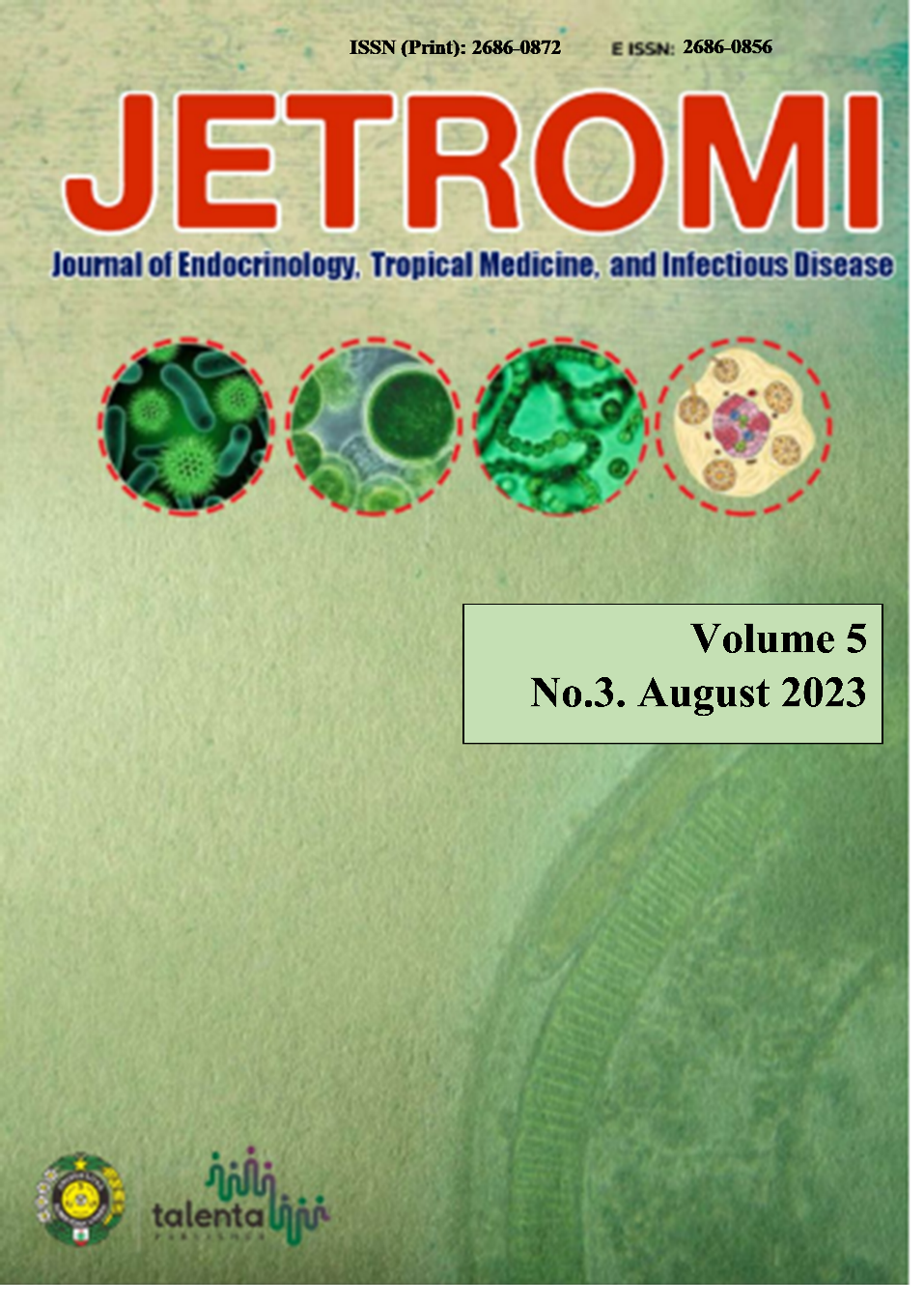Cardiometabolic Risk Assessment through Comprehensive Screening for Early Detection
DOI:
https://doi.org/10.32734/jetromi.v5i3.12818Keywords:
Cardiometabolic Risk Factors, Indonesia, Obesity, Sumatera UtaraAbstract
Background: The development of cardiovascular disease (CVD) is influenced by many risk factors, such as tobacco use, an unhealthy diet, and physical inactivity, that could result in obesity, hypertension, dyslipidemia, and diabetes mellitus. Continuing exposure to these risk factors can be prevented by routine screening for populations without any clinical symptoms. This study was conducted to obtain data on cardiometabolic profiles of people who participated in the Community Service Program of the Department of Cardiology and Vascular Disease, University of Sumatera Utara.
Method: This research was a descriptive study with a cross-sectional research design. The study aims to screen for the cardiometabolic profile in the people of Tebing Tinggi City. Cardiovascular risk factors were obtained from interviewing the participants and on-the-spot examination with validated measurement tools. All data were processed and analyzed statistically using SPSS ver.26. Categorical variables are presented with frequency (n) and percentage (%). Numeric variables are presented with mean and standard deviation (SD) values for normally distributed data. As for the normal non-distributed data numerical variables are presented with the middle value (median) and the interquartile range.
Results: All subjects in this study (n= 102) are 39 male and 63 female. Most participants were in the 4th to 5th decade, with normal heart rates and normal sinus rhythm. Most female participants had a low risk for obstructive sleep apnea (OSA) and the male had intermediate risk. Most participants had normal random blood sugar and total cholesterol but mostly had obesity. Near 20-30% of participants were grade I and II systolic hypertensives but normally had diastolic blood pressure.
Conclusion: In this study, most of the cardiometabolic risks of patients in the Community Service program were obesity, followed by hypertension.
Downloads
Downloads
Published
Issue
Section
License
Copyright (c) 2023 Journal of Endocrinology, Tropical Medicine, and Infectious Disease (JETROMI)

This work is licensed under a Creative Commons Attribution-NonCommercial-ShareAlike 4.0 International License.
The Authors submitting a manuscript do so on the understanding that if accepted for publication, copyright of the article shall be assigned to Journal of Endocrinology, Tropical Medicine and Infectious Diseases (JETROMI).
Copyright encompasses exclusive rights to reproduce and deliver the article in all form and media. The reproduction of any part of this journal, its storage in databases and its transmission by any form or media, will be allowed only with a written permission from Journal of Endocrinology, Tropical Medicine and Infectious Diseases (JETROMI).








